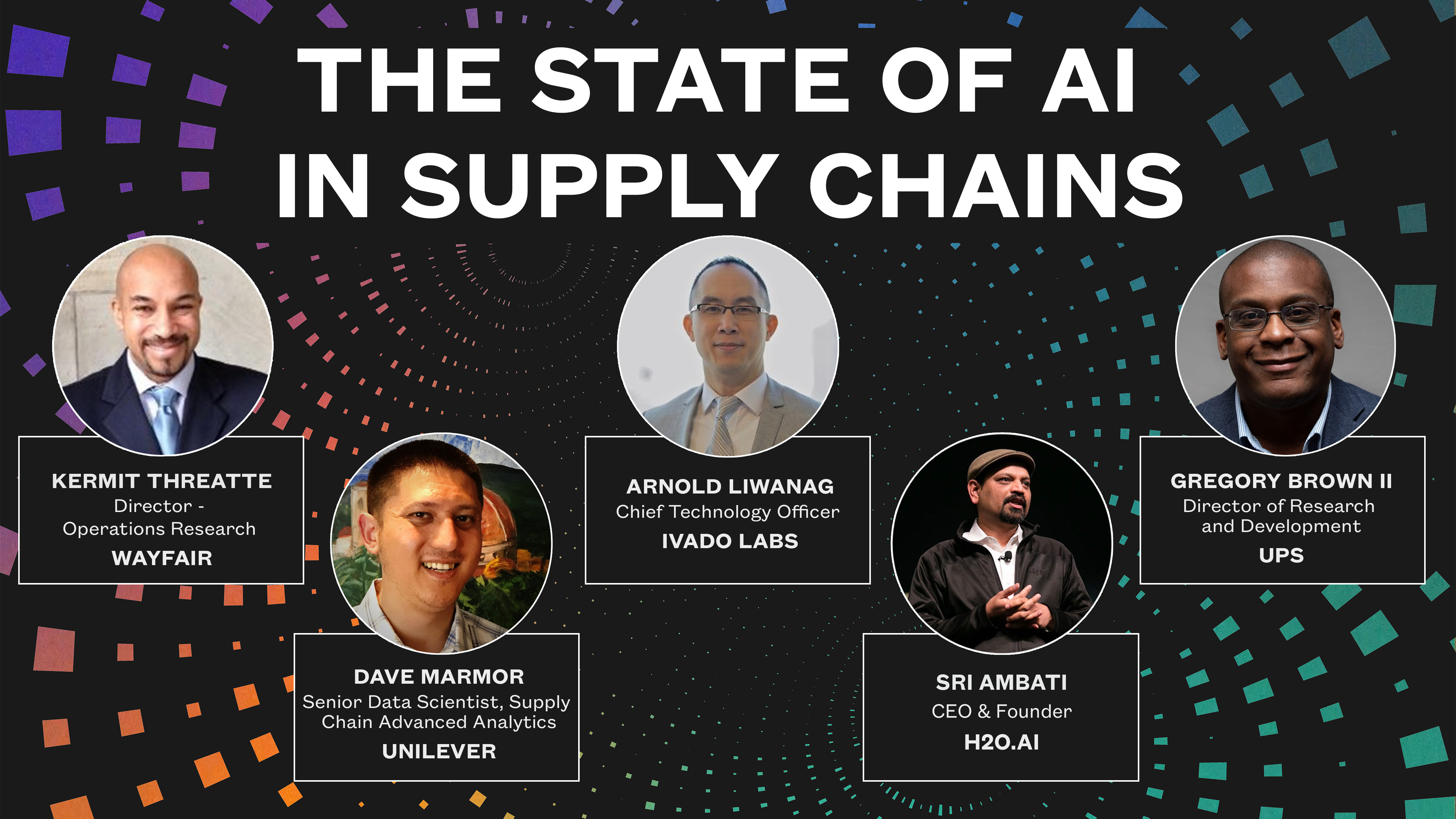 BACK
BACK

Director - Innovation, AI
WalMart
Introduction
Points to Address:
- Looking at data not so much from a tech standpoint but from a process standpoint
- How can we use data from the back door to the front door?
- Considering availability: how can we create the product our customers want when they want it?
- How can we use data to enhance our associates’ lives?
How Walmart Has Been Working With AI
For the last few years, Walmart has really been on a modernization hunt:
- Equipping associates with apps that run on their own phones.
- Placing robots in stores that scan the shelves and clean the floors.
- Equipping our back rooms with systems to help us unload our trucks more quickly and efficiently.
Not every company has been investing in this path:
- 90 percent of digital decision makers say that revolutionary data-led projects are discussed, but only result in small-scale changes.
- Only 4 percent claim to have revolutionized their businesses. -- Couchbase Global CIO Survey, 2017
Results: only a small-scale change.
- Ryan’s favorite stat from this study: 84 percent of those survey said that they either reduced scope or completely abandoned their projects due to legacy databases.
Bottom line: big ideas falter when they are overwhelming to implement. When we have big ideas, we have to keep so many things moving forward at the same time. And when you do that, you tend to slow down.
Resulting problems from big ideas that may be too big to execute:
- Inspiration without execution. We get into the “what if’s.” Example: What if we did this? What if we did that? We can solve this problem this way or that way. You wind up with a death by a thousand decks.
The flip side of that:
- Experimentation without direction: we get really excited with the technology, and we want to do it all. Ultimately, though, we wind up with “shiny new toy syndrome” where we are just throwing out new demos.
Where we really want to land is right between these two extremes.
- Big bets must be approached with a maker mindset: we need to get in there and do what we are not comfortable doing. We need people to get into the mud, where they are uncomfortable, and push things forward.
How?
- For business people: You should be able to pull your own data. You should be able to analyze it.
- For tech people: know the return on investment (ROI) of the businesses you are developing. That is going to help guide you as you move forward.
Ryan’s guideline when working on data projects:
- Let go. Completely. It’s a human tendency to want to develop the perfect solution for every problem, but perfect solutions require perfect problems. Things are messy. Data is noisy. Processes that you design for your associates to follow probably are not going to be followed. So we need to step back and let go of what our expectations are. We’ve got to be curious before we are critical. We need to be open to different ideas and even different solutions -- and even different problems.
Ask yourself these questions:
- If the problem won’t work, what will?
- What is the step that we can take toward that goal?
- What can we do that can at least move us in the right direction?
Bottom line: Complex problems require complex solutions, so make the problem simpler. Scale it back.
How to make your data work for you
- Gather momentum at the beginning of a project, not in the middle.
- Fail harder! You have to overshoot a few times in order to land it just right.
- Break down your problems into smaller chunks.
- Use off-the-shelf tools when you can -- the point is to move quickly.
- If you don’t have to build it from scratch, don’t build it from scratch.
- Look for the changes. The perceived value may change.
- Reserve the right to get smarter. Innovation is an S curve. It’s not linear.
Stick with clean data
Clean data is used to build a permanistic model: it may not get us to where we want to be, but it gets us something right now. Take that same model and start developing features that feed it. That brings us a step closer. There are a lot of small steps we can take to move us toward our final goal. Because what we want are just basic blocks of simple functionality. We want to simplify it and do it again and again. This requires you to have the right team.
Build the right team
Not every team is currently equipped to do what you need. You really have to form your team and keep your problem space tight. You need certain types of people to really move a data project forward:
- Scout: the person on the front line. They have probably been around your company for a long time. They know where all the bodies are buried. They know where all the data is and who owns it and how to get access to it. They are the ones who help us identify what sources might be beneficial.
- Designer: somebody who can stare down a problem, frame it up, and identify what is the best approach for attack. They design proof of concepts that move us closer to where we want to be. They try a lot of different things.
- Scientist: collecting feedback. They build test plans. They love understanding what actions we are taking and what is the outcome of those actions. They aim to set up an experiment that’s pure, where we can look at our test set against what we are doing.
- Advocate: the most overlooked. AI and machine learning is going to lead to some of the largest changes in associates’ careers. It will change the way they work and how they approach their work. An advocate will champion both the technology and how it applies to our associates. The advocate will also interact with the associates themselves and how they use this technology. They are a feedback cycle to our teams so that we can understand how we are approaching our associates. If we don’t get a buy in from our customers and associates, we’re never going to use it.
Bottom line: bring your teams in tight and close. You need to be constantly communicating and sharing what is currently of value. Always consider the feedback from your associates. Everyone needs to have a shared understanding of the exact same goals.
Recent Posts

Developing Computer Vision Applications in Data Scarce Environments
Introduction In today’s digital era, computer vision stands as a transformative technology, driving innovations across...
By Sumedh DatarDecember 12, 2023

Bottlenecks in Supply Chains & How AI Can Help
During this panel, industry experts (showed above) discussed the impact of COVID-19 on AI on...
By Ai4May 05, 2020

How COVID-19 is Impacting the State of AI in Supply Chains
During this panel, industry experts (showed above) discussed the impact of COVID-19 on AI on...
By Ai4May 04, 2020